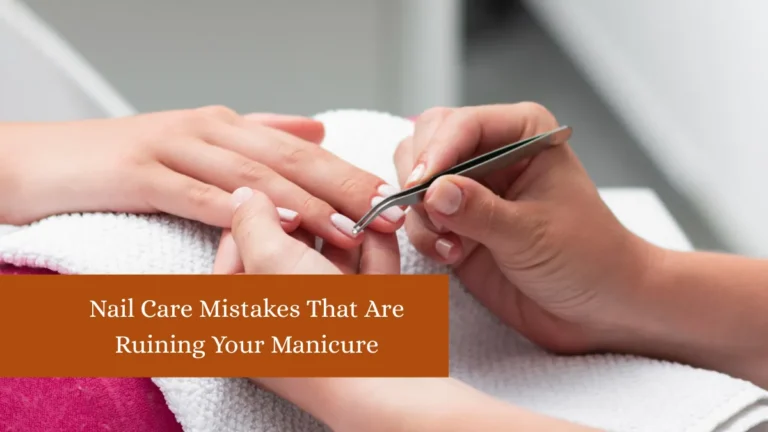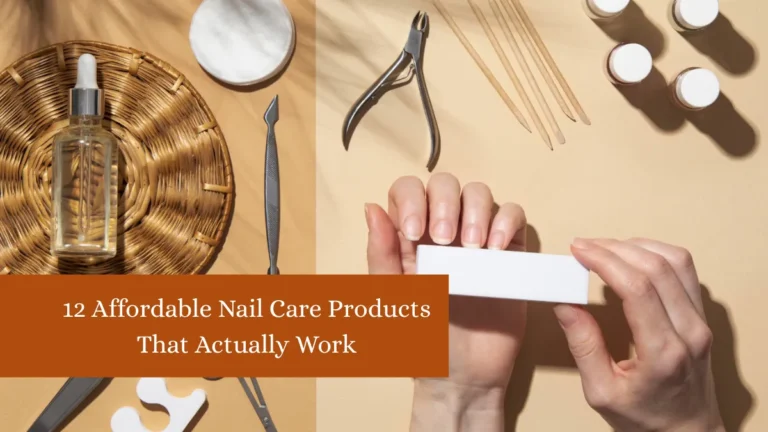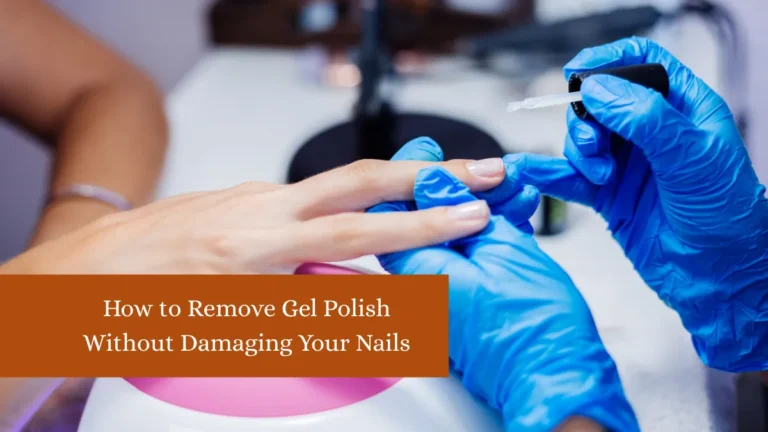Your nails are more than just a surface for pretty polish—they can be a window into your overall health. From subtle color changes to unusual shapes, your nails often reveal early warning signs of underlying conditions before other symptoms appear. Healthy nails are generally smooth, evenly colored, and free from spots or ridges, while noticeable changes might indicate nutritional deficiencies, infections, or even systemic health issues.
Unfortunately, many people overlook these clues, dismissing them as cosmetic concerns rather than potential health indicators. By paying attention to your nails’ appearance, texture, and growth patterns, you can detect signs that something might be wrong and seek timely medical advice. This guide covers 10 important nail signs you should never ignore, explaining what each could mean and why it matters. While some nail changes are harmless, others may require professional evaluation—understanding the difference is key to protecting your health.
1. Yellow Nails
Yellow nails are one of the most common nail changes and can result from multiple causes. Sometimes, they’re simply due to staining from nail polish—especially darker shades—without a base coat. However, persistent yellowing without cosmetic causes could indicate a fungal nail infection, which gradually thickens and distorts the nail. In more serious cases, yellow nails may be linked to respiratory conditions like chronic bronchitis or systemic illnesses such as diabetes or psoriasis.
A rare condition called “yellow nail syndrome” is also associated with respiratory and lymphatic issues, where nails become thick, slow-growing, and discolored. Smoking is another factor, as nicotine stains both nails and skin. If yellowing persists despite proper nail care, it’s important to get a medical evaluation. Treatment depends on the cause—fungal infections require antifungal medication, while systemic conditions need targeted treatment. In the meantime, always use a protective base coat, practice good hygiene, and avoid prolonged exposure to staining agents.
2. White Spots (Leukonychia)
White spots on nails, medically called leukonychia, are often harmless and temporary. In many cases, they’re caused by minor trauma to the nail matrix—the area under the skin where nails grow. This can happen from bumping your nails or pushing cuticles too aggressively. The spots typically grow out with the nail and disappear over time. However, if white spots are recurrent or appear across multiple nails, they may signal a zinc or calcium deficiency, or less commonly, a fungal infection.
In rare cases, they can be linked to systemic illnesses or poisoning from heavy metals like arsenic, though this is uncommon in modern contexts. Persistent or widespread leukonychia should be evaluated by a doctor, especially if accompanied by other nail or health changes. To prevent harmless spots, handle nails gently, keep them hydrated, and avoid harsh chemicals. Nutritionally, eating a balanced diet rich in minerals can also support nail health.
3. Brittle or Splitting Nails
Brittle nails that split, peel, or break easily may simply result from frequent exposure to water, detergents, or cold weather. These factors strip natural oils, leaving nails dry and fragile. However, chronic brittleness can point to underlying issues such as hypothyroidism, iron deficiency anemia, or even hormonal imbalances.
Overuse of nail polish removers, especially those containing acetone, also contributes to nail weakening. Nutritional deficiencies, particularly in biotin, protein, or essential fatty acids, can exacerbate the problem. Fungal infections and skin conditions like psoriasis may also cause nail splitting.
To address brittle nails, start with lifestyle changes—wear gloves for chores, moisturize nails daily, and limit harsh chemicals. Dietary improvements and biotin supplements may help strengthen nails over time. If brittleness persists despite these measures, medical testing may be necessary to rule out systemic health conditions. Healthy nails should be flexible yet strong, indicating good hydration and balanced nutrition.
4. Spoon-Shaped Nails (Koilonychia)
Spoon-shaped nails, medically known as koilonychia, curve upward at the edges, creating a concave appearance that can hold a drop of water. While this unusual shape may be genetic in some cases, it is more commonly linked to iron deficiency anemia. When the body lacks iron, hemoglobin production decreases, affecting oxygen delivery to tissues, including the nail matrix. This leads to abnormal nail growth patterns.
Spoon nails can also be associated with liver conditions, hypothyroidism, and certain autoimmune disorders. Chronic exposure to petroleum-based solvents has also been linked to koilonychia in occupational settings. If you notice spooning nails, it’s essential to get a blood test to check iron levels and overall health. Treatment focuses on correcting the underlying cause—iron supplements for anemia, thyroid medication for hypothyroidism, or addressing occupational exposures. Left untreated, the condition can progress, making nails increasingly fragile and prone to breaking.
5. Pitting
Pitting refers to small depressions or dents on the nail surface, giving it a rough, textured look. This is most often associated with psoriasis, a chronic autoimmune skin condition that accelerates skin cell turnover, affecting both skin and nails. Around 50% of people with psoriasis develop nail pitting at some point. Pitting can also occur with other autoimmune disorders like alopecia areata and eczema. Sometimes, it appears alongside discoloration, thickening, or crumbling of the nails.
The underlying mechanism involves inflammation in the nail matrix, disrupting normal growth. While mild pitting may be purely cosmetic, severe cases can indicate active disease requiring medical attention. Dermatologists often treat nail pitting with topical steroids, phototherapy, or systemic medications targeting the underlying condition. Early diagnosis is important because nail changes can precede skin symptoms in autoimmune diseases, offering an early window for intervention and improved management.
6. Beau’s Lines
Beau’s lines are horizontal grooves or indentations that run across the nail. They form when nail growth is temporarily interrupted due to illness, injury, or severe stress. Causes include high fever (from infections like pneumonia or COVID-19), chemotherapy, malnutrition, or major surgery. The depth and number of Beau’s lines can indicate how severe and how often the growth disruptions occurred. Since nails grow about 3 mm per month, the position of the line on the nail can help estimate when the event happened.
While Beau’s lines themselves are harmless, they signal that the body has experienced significant stress. If multiple nails are affected, it points to a systemic cause rather than local trauma. Treatment focuses on addressing the underlying trigger and allowing healthy growth to resume. As the nail grows out, the lines will gradually disappear, usually over several months.
7. Clubbing
Clubbing occurs when the tips of the fingers enlarge and the nails curve around the fingertips, creating a bulbous appearance. This change happens gradually and is often associated with chronic low oxygen levels in the blood. Conditions such as lung cancer, chronic lung infections, interstitial lung disease, and congenital heart defects are common causes. Clubbing can also occur in gastrointestinal disorders like Crohn’s disease or liver cirrhosis.
The exact mechanism isn’t fully understood, but it’s believed to involve increased blood flow to the fingertips and changes in connective tissue. Clubbing is not just a cosmetic change—it’s a potential red flag for serious disease. If you notice this sign, seek immediate medical evaluation. Early detection and treatment of the underlying condition can prevent further complications and may even reverse the changes in some cases.
8. Dark Streaks or Lines
Dark vertical streaks on nails can have both harmless and serious causes. In individuals with darker skin tones, they may be benign melanonychia, caused by increased pigment production in the nail matrix. However, in other cases, especially if the streak is new, widening, or accompanied by nail damage, it could indicate subungual melanoma—a dangerous type of skin cancer that develops under the nail. Trauma can also cause dark streaks due to bleeding beneath the nail, which grows out over time.
The key warning signs are irregular borders, multiple colors, or streaks that affect only one nail. Any suspicious streak should be evaluated by a dermatologist, who may recommend a biopsy to rule out cancer. Early detection is crucial, as subungual melanoma can spread quickly if left untreated.
9. Pale or White Nails
Extremely pale nails may signal anemia, liver disease, malnutrition, or congestive heart failure. When the nail bed loses its healthy pink color, it often means there’s reduced blood flow or oxygenation to the area. This change can be gradual or sudden, depending on the cause. In some cases, white nails with a dark band at the tip (Terry’s nails) are specifically associated with liver conditions like hepatitis or cirrhosis.
If pale nails appear suddenly alongside fatigue, shortness of breath, or other symptoms, urgent medical evaluation is necessary. The treatment depends on the underlying condition, whether it’s improving diet, managing a chronic illness, or treating a serious systemic disease. Restoring healthy nail color is often a sign that the condition is being successfully managed.
10. Horizontal Half-and-Half Nails (Lindsay’s Nails)
Half-and-half nails, also known as Lindsay’s nails, are characterized by a distinct color division—the bottom half of the nail is white, while the top half is pink, red, or brown. This pattern is often associated with chronic kidney disease, though it can appear in other serious illnesses as well.
The exact cause isn’t fully understood, but it’s thought to involve changes in nail bed blood flow and pigment deposition due to systemic disease. If you notice this pattern and have not been diagnosed with kidney issues, it’s important to get tested. Managing the underlying health problem can sometimes reverse or improve the nail appearance, but in chronic cases, the change may persist even after treatment.
Bottom Line
Your nails can reveal valuable clues about your overall health, from minor nutrient deficiencies to serious systemic diseases. While not every nail change is alarming, persistent or unusual patterns should be checked by a healthcare professional. Paying attention to your nails’ condition and appearance allows for earlier detection of potential health problems, leading to faster, more effective treatment. Healthy nails reflect a healthy body—so don’t ignore what they’re trying to tell you.
FAQs
1. Can nail changes be the first sign of illness?
Yes, sometimes nail changes appear before other symptoms.
2. Are white spots on nails always due to calcium deficiency?
No, they’re often caused by minor trauma to the nail.
3. When should I worry about nail discoloration?
If it’s persistent, spreading, or accompanied by other symptoms.
4. Can nail health improve with diet?
Yes, balanced nutrition supports healthy nail growth.
5. Are dark streaks on nails always cancer?
No, but they should be checked to rule out melanoma.
✨ You May Also Like ✨







